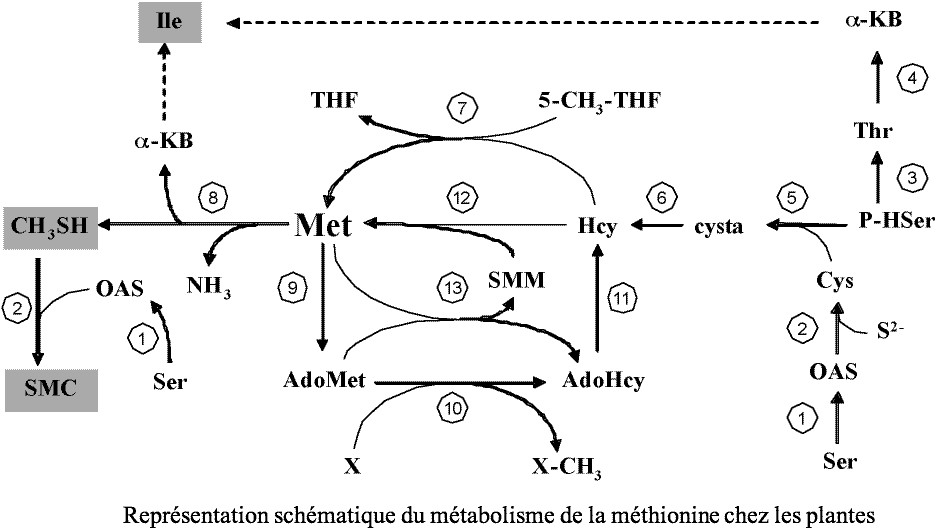Despite the recent insights into biosynthetic pathways for essential amino acids in plants, little is known about the catabolism of these amino acids.

A team from our laboratory has shown that, in the Arabidopsis plant model, methionine (a sulphur-containing amino acid) is cleaved in the cytosol, to form both alpha-cetobutyrate and methanethiol. This last product is a small volatile compound that is partly responsible for the "rotten cabbage" smell often associated with the fermentation of crucifer plants. The alpha-cetobutyrate thus produced enters the pathway of isoleucine (another essential amino acid) biosynthesis in plastids, indicating that the methionine degradation pathway is associated with isoleucine biosynthesis. A large part of the methanethiol is condensed with a serine molecule to form methylcysteine, which then accumulates in the vacuole. While no physiological role has so far been identified for methylcysteine, it may represent a reserve of sulphur for the plant.
Methionine cleavage is powered by an enzyme, methionine-gamma-lyase, which is strongly induced when cellular methionine concentrations increase. This enzyme is found in all plant tissues to varying degrees, with the exception of dried seeds. It is however induced during seed imbibition, which would suggest that it plays an important role in the regulation of methionine metabolism during seed germination.